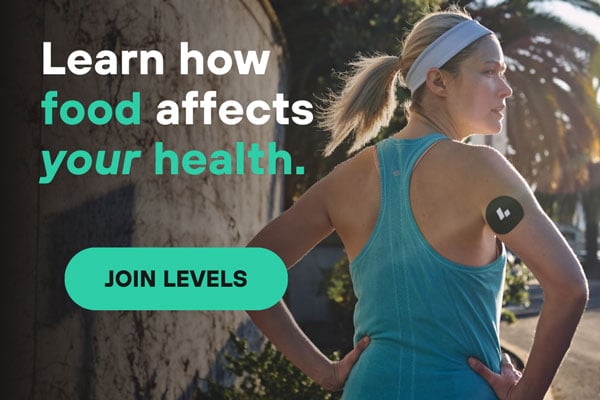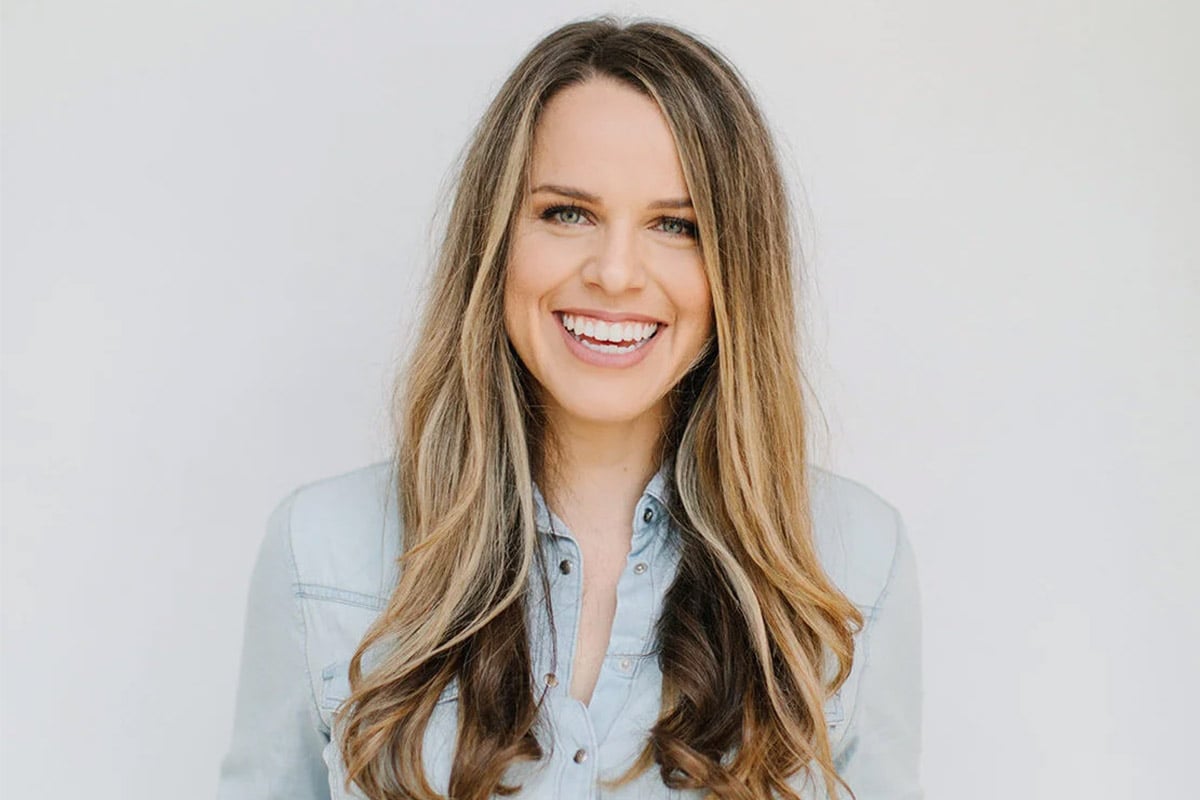Member Profile
Who: Rachel Soper Sanders, CEO and Co-Founder of Rootine
Where: Nashville, TN
Time with Levels: One month
Found Levels Through: Tech founder network
1. As a CEO and new mom, what’s been your overall approach to health and diet?
To me, optimizing your health and wellness means that you can perform better at what you’re doing during the day. In my roles as a founder, a mom, and a partner, I can’t really afford to miss days due to low energy, brain fog, or getting sick. Self-care matters; making sure that I prioritize it even among all of my other responsibilities means that I can get much more done throughout my day. My overall approach is data-driven and informed by how I can improve across the health stack: sleep, exercise, and nutrition.
“The concept of finally figuring out what my personal glucose response was to what I’m eating is way more interesting to me than a standard one-size-fits-all option.”
I learned through Rootine that, genetically, I have some cellular dysfunction related to detoxification and an increased need for antioxidants, so my mindset is ensuring that I’m eating more organic and staying away from those processed foods. And making sure I’m maintaining optimal micronutrient levels.
I’m an omnivore but I try to eat as clean as possible—a mix of lean proteins, fruits, vegetables, and complex carbs. That helps me feel my best. Admittedly, though, that doesn’t always happen. Some days I raid the cabinet to find whatever I can eat in the two minutes between my meetings.
2. Why did you want to put a CGM on your arm?
I’ve never been a believer that standard one-size-fits-all diet fads, exercise trends, micronutrients, or other nutrition solutions work for everyone. Personalized data is of the utmost importance to me, so using a CGM was another tool I could use to best figure out my body’s responses. The concept of finally figuring out what my personal glucose response was to what I’m eating is way more interesting to me than a standard one-size-fits-all option.
In addition, throughout my life, various people, including doctors, have told me that I have some hypoglycemia. But I never knew if my afternoon energy dips were related to my blood glucose. With Levels, I know the answer is yes. My energy slumps when my glucose drops below 70. It’s worse if I eat a lunch that spikes my glucose because then it’s more likely to dip to a low level. Now, I’ve found that if I eat a protein-based lunch without my fruit dessert, my energy is more consistent throughout the day.
Learn more:
3. What have you learned that surprised you?
Fruit has always been my sweet of choice. So, I’ve been testing which fruits spike my glucose and which ones don’t. Berries are great. Oranges and bananas are horrendous. Now, I still eat fruit, but I try to choose the ones that have a lesser impact on my glucose. Through the app’s Challenges feature, I also tried pairing fruit with protein, which helped.
Another thing that surprised me was about sugar. I don’t typically like dessert. I also assumed that any time I consumed any sugar, my glucose levels would spike. One day, I made a lemon cake. I switched out the refined white flour for higher-protein almond flour, but I kept the amount of sugar the same. The result? Eating the slice did nothing to my glucose. I learned that I should avoid refined flour and add protein if I want to have something sweet to keep my blood sugar levels steadier.
I’ve tested other foods as well. I take Rootine vitamins with black coffee and my glucose is completely stable. But kombucha spikes it massively, which is sad because I love kombucha.
4. What was something you learned that wasn’t about food?
Occasionally, I have sleep issues where I wake up at 2 or 3 a.m. hungry. It’s hard to go back to sleep when that happens. After I put on my CGM, I saw that this was related to my glucose dropping. Every time I would wake up, my glucose level would be at a 50 or 60. Through some experimentation, I noticed that if I was a little bit more consistent keeping my glucose levels steady, I do not wake up as much at night. Ultimately, if I can make better choices throughout the day, I know I’m going to sleep better.
I also tested walking after a high glycemic meal. For me, walking delayed the spike but did not eliminate it completely.
5. What advice do you have for other new parents who want to optimize their health?
When you talk about health optimizations, sleep is always in the conversation. But sleep as a new mom really isn’t an option. You have to look at the other key pillars of health—nutrition, and exercise—and really make sure you’re trying your best to be consistent across those two. If you’re eating a bunch of processed foods, you’re not going to function at your optimal self, given your lack of sleep. Empowering yourself with the data you need to make informed choices is also key. Testing and tracking metrics like micronutrient levels and cellular nutrition, glucose response, sleep, and recovery can all help you improve how you feel and perform day to day.
I worked hard to lose the weight I gained during pregnancy rather quickly, but there were four pounds that wouldn’t budge. I lost them completely in the first two weeks with Levels. If I were to want to lose weight again in the future, I’d put this on immediately and tell myself that as long as I keep my glucose levels steady, I’ll lose weight. No need for calorie counting.










